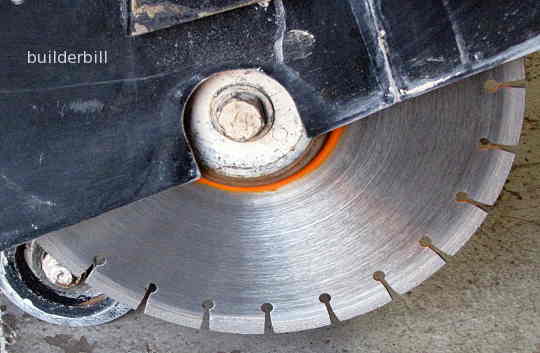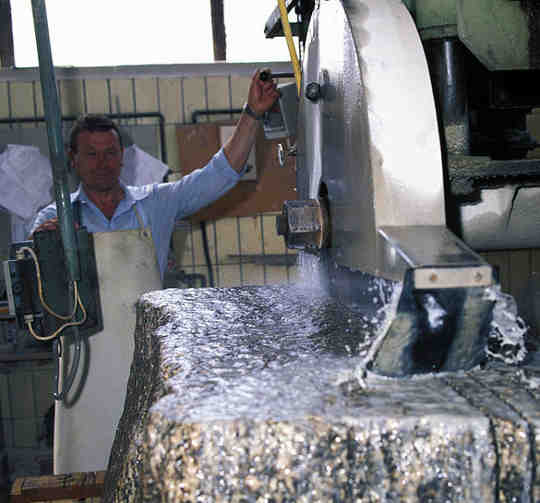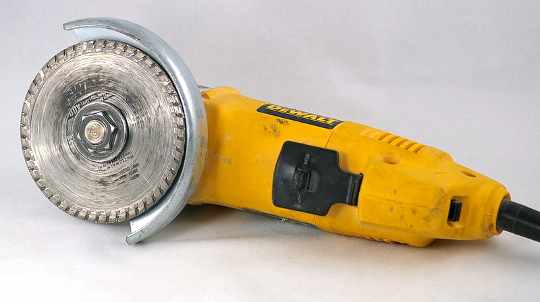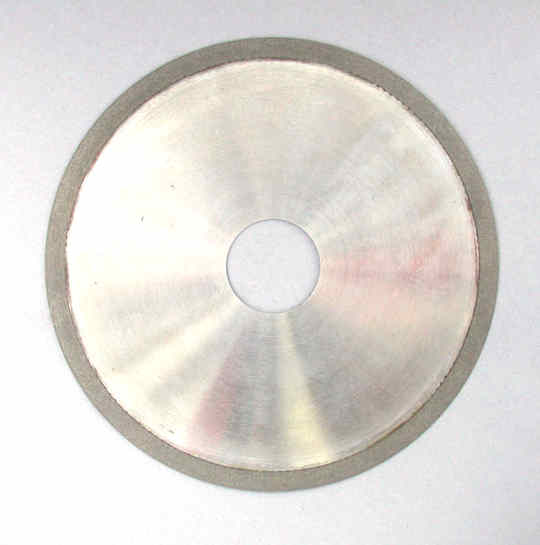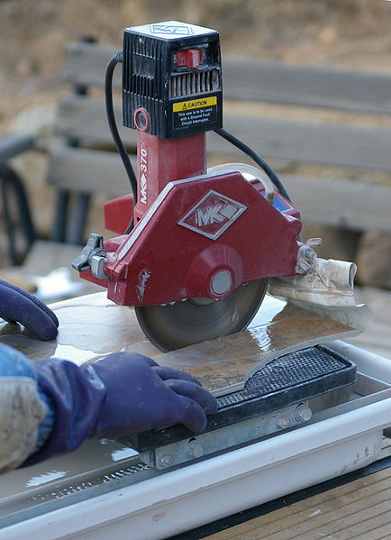 |
|||||||||||||
Graphical Construction Glossary >> Tools. >> Power Tools >> Diamond Saw Blade
Diamond blades are HSS (high speed steel) blanks that are tipped with a matrix that contains small chips of industrial diamond. It is not uncommon to see a saw blade like to saw above that has lost one of the segments, but that is nearly always the result of rough treatment.
As you can see by the photo above when using saws wet, the amount of work that the saw is doing requires a lot of cooling water. The bigger the saw the more water is needed to keep it cool.
The large segmental grooves on this blade are there to provide some measure of air cooling when working dry. At the same time the tool should be rested frequently during use. This small grinder should never be used wet. It is not a special purpose sealed machine. I have used small wet grinders on polished concrete work but this is not one of them. If in any doubt at all don't let water get near to any electric tools.
Ceramic tiles are a separate category of blade. They are invariably very smooth so that the face of the tile is not chipped when cutting.
Wet cutters are a good idea for ceramics but it must be noted that compared to a score cutter they are very messy. As always with any sort of tool try to cultivate a feeling for when it is working well, and when it is overloaded I go back to the days of extremely expensive diamond saw blades. At the hire company, with the large diameter blades costing several hundred of dollars they used to measure the blades with a micrometer and charge for the blade usage as well as the hire. Here are a couple of tips that I can give you from the days when I used to run a 24" twin cylinder Wisconsin engined concrete saw.
If you didn't find exactly what you are looking for try this search tool that will search the site and the web. "What can be added to the happiness of a man who is in health, out of debt, and has a clear conscience? "When we build, let us think that we build for ever."John Ruskin 1819-1900 |
Hire Equipment  Furniture Fittings - Architectural Hardware - Electronic Locking Systems - Technical Hardware BuilderBill sponsorship Glossary Pages.Roof Glossary and Roofing Formwork Glossary and other tempory work. Hand Tools Glossary Power Tools Glossary Asbestos Glossary Woodwork Glossary Stair Glossary Concrete Glossary Masonry Glossary doors Glossary BuilderBill Books Building Maths  Stair Design  Asbestos Book |
||||||||||||
|
|
|||||||||||||
|
Please Note! The information on this site is offered as a guide only! When we are talking about areas where building regulations or safety regulations could exist,the information here could be wrong for your area. It could be out of date! Regulations breed faster than rabbits! You must check your own local conditions. Copyright © Bill Bradley 2007-2012. All rights reserved. |
|||||||||||||
